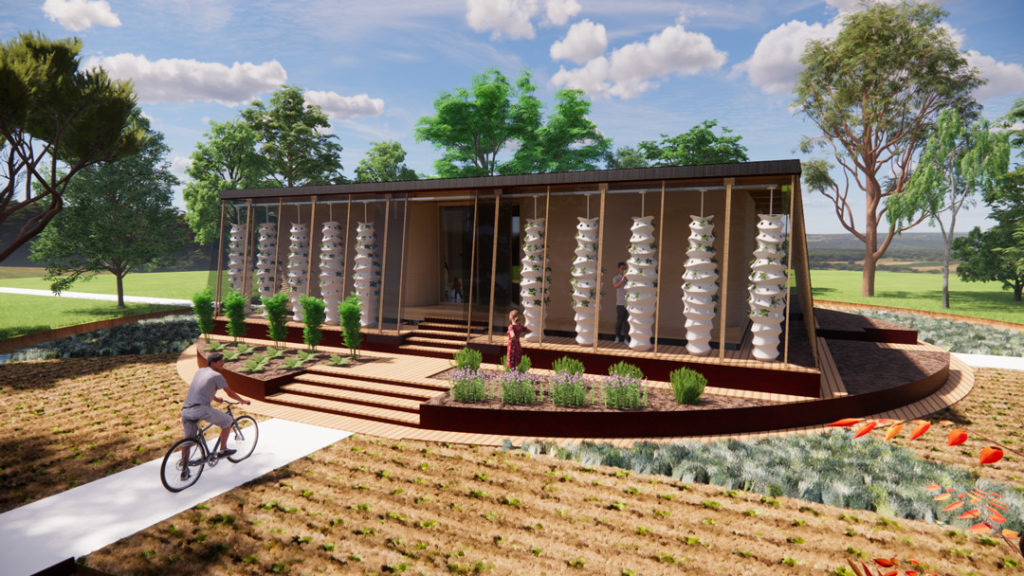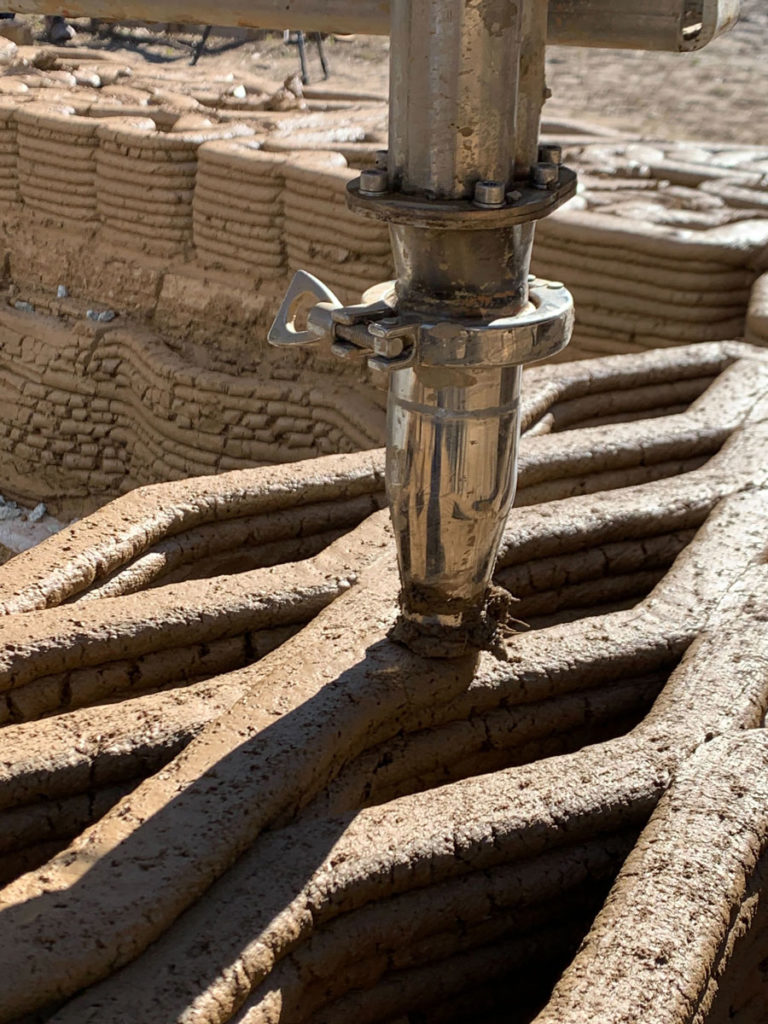WASP is a very different kind of 3D printing company. The Italian firm is very idealistic and was literally founded to change the world—after all, the company name is an acronym for “World Advanced Saving Project.” WASP wishes to build things in a new, more sustainable way via 3D printing. Now, the firm has announced that it will be putting this into practice for housing. The company has bought land in Bologna where it is beginning work on a new, self-sufficient 3D printed housing community it calls Itaca.
Each Itaca home is meant to be completely self-sufficient when it comes to providing heat, water, and food for four people. What’s more, Itaca is an experiment where learning and designs will be shared so that others can adopt them. Over the next 12 months, the homes will be built using the giant WASP Crane 3D printer, already used to 3D print a home from locally sourced, earthen materials. WASP calls it a “training project, an open-source laboratory,” which is exactly the right approach to trying to improve housing and living for all. This is a giant project and an immense idea, but every revolution has an inception point and WASP is making this happen in Bologna.
WASP specifically wants to be able to construct these homes in austere environments with few resources. Away from industry, the modern world and all its conveniences, it would be possible to build homes that provide all the resources needed to live well. What is astounding about this is that the team wants to do all of this inside of a structure that measures 33 meters in diameter. Within this space, they aim to create a self sufficient ¨circular micro-economy¨ in harmony with nature.
“Getting a place as harsh as the moon to be inhabited is hard to imagine, but science says it can be done. Why don’t we apply the same technologies here on Earth, to get even the most extreme environments to be hospitable? For us at WASP, Itaca represents a path towards food, water, energy and economic self-sufficiency. A proposal for a solution to the social, energy, climate, and mass migration crisis. For us, 3D printing and digitization are a response to the needs of humanity,” said WASP founder Massimo Moretti.
The team wants to build more of these homes and share their findings as the project unfolds. This ¨collective research and development model¨ could aid others in building Itaca homes in other parts of the world. One could also use WASP’s learnings to produce their own home in a more sustainable way.
WASP is unabashedly idealistic, hopeful and optimistic about humanity’s future even in the dark days that we live in now. This is refreshing. Our world is consuming too much of its resources. The distribution of those resources is inequitable and we are like a lumbering freight train heading for a steep drop off a cliff 30 years away. And yet we do nothing. There are no real big solutions for all the little and big problems out there. It is often easy to dismiss WASP´s optimism about the future and its idealistic approach to engineering, but it’s admirable that some firms are developing solutions to bring about a better world.
Here, WASP has developed one possible solution to many of the problems that we face. If this works, then WASP will have developed a very ecologically efficient way for people to live. What’s more, this could be a financially very attractive way to live, as well. Reducing resource consumption and energy use is not only cute in a tree-hugging kind of a way. Especially in an era of high and volatile energy costs this is cost efficient as well. Minimizing the material and energy embedded in buildings also saves you money.
A powerful aspect of this project is that it could be a model in order to live in concert with nature in France. People who wish to be more sustainable could go to a beautiful area and live there without destroying it. At the same time, off-the-grid living is a potential solution to those in the developing world who are surrounded by nature but wish to have amenities such as clean water. So, for the richest and poorest, the same dwelling could be a solution. What I like most about this though is that it can inspire many others to do the same while teaching them about the pitfalls and successes of such a project along the way.
Subscribe to Our Email Newsletter
Stay up-to-date on all the latest news from the 3D printing industry and receive information and offers from third party vendors.
You May Also Like
3D Printing News Briefs, April 13, 2024: Robotics, Orthotics, & Hypersonics
In 3D Printing News Briefs today, we’re focusing first on robotics, as Carnegie Mellon University’s new Robotics Innovation Center will house several community outreach programs, and Ugogo3D is now working...
Rail Giant Alstom Saves $15M with 3D Printing Automation Software 3D Spark
3D Spark has entered into a three-year deal with the rail giant Alstom. Alstom, a transport behemoth with annual revenues of $16 billion, specializes in the manufacture of trains, trams,...
Meltio Expands Global Reach with New Partnerships in the Americas and Europe
Spanish 3D printing manufacturer Meltio has expanded its sales network across the globe. With the addition of three new partners in the United States, Brazil, Argentina, and Italy, Meltio aims...
3D Printing Webinar and Event Roundup: April 7, 2024
Webinars and events in the 3D printing industry are picking back up this week! Sea-Air-Space is coming to Maryland, and SAE International is sponsoring a 3D Systems webinar about 3D...


































